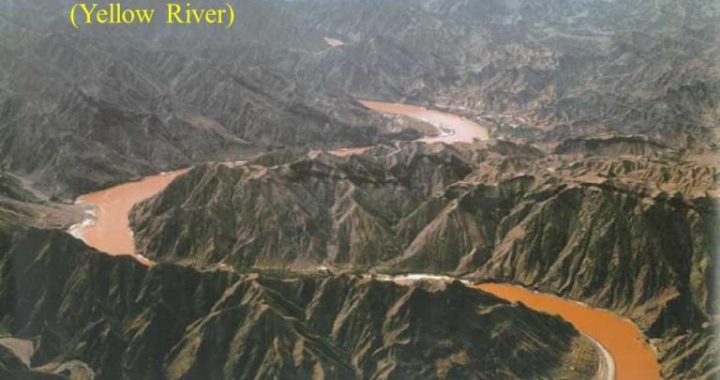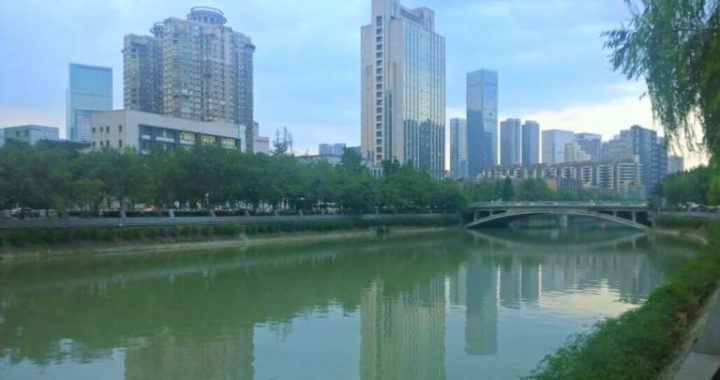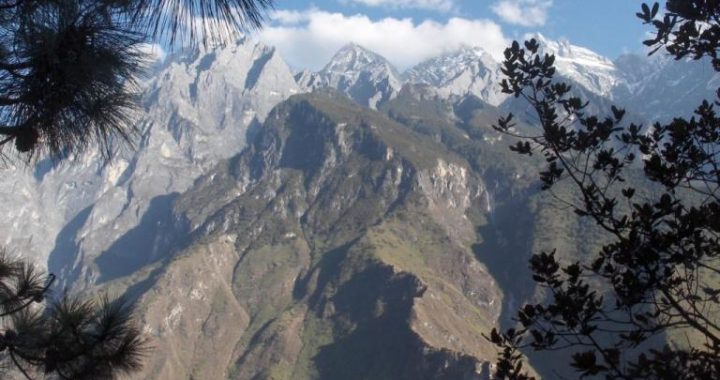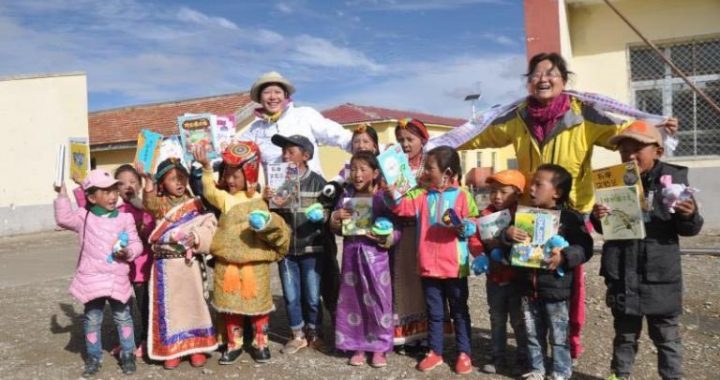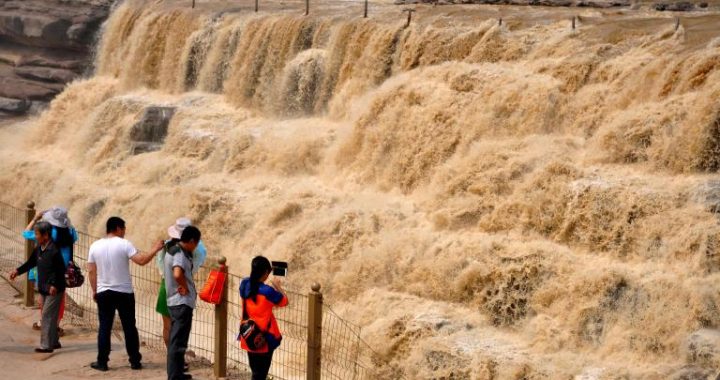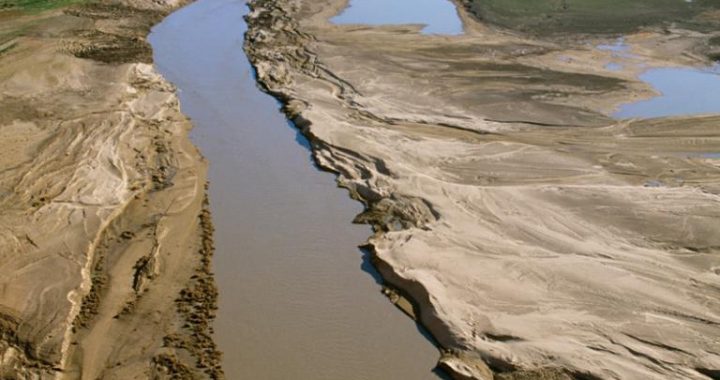The Prosperity Today and Tomorrow
10 min readMacro-agricultural Production
Since the foundation of People’s Republic of China in 1949,the government have organized to maintain the Yellow River levees for many times,establishing and amplifying the government organizations to regulate the Yellow River.They also worked out the long-range plans of the Yellow River regulation and constructed large key water conservancy projects like Sanmen Gorge,Liujia Gorge,and Xiaolangdi etc.After a series of planning and regulation,the river course of the Yellow River is largely under control and the whole Yellow River Basin also becomes prosperous and stable.
Agriculture in broad sense contains crops-growing,stock raising,forestry and fishery and so on;therefore it is also called macro-agriculture.
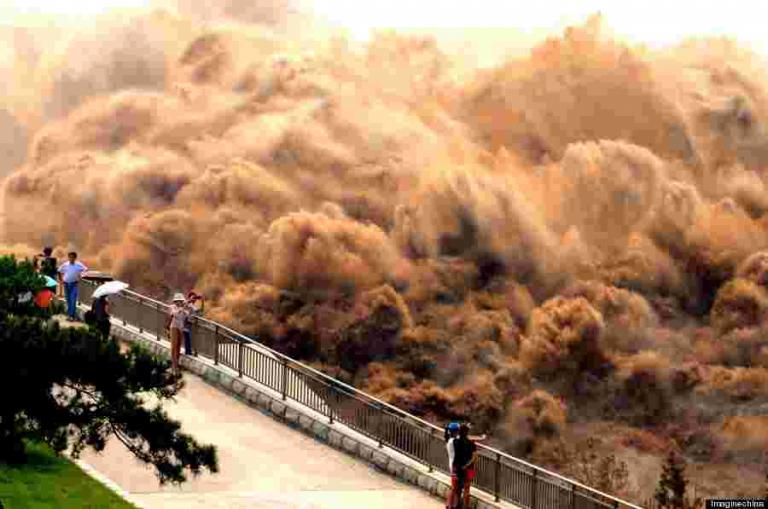
Because of the specific geographic and climatic factors,the macro agricultural production in the Yellow River Basin consists of the following forms:
1)Crops-growing
The Yellow River Basin has about 200 million mu(about 32.88 acres)of farmlands,with 2.3 mu per capita,and accounting for 13%of the whole acreage of the farmlands in China.The plain of the lower reaches of the Yellow River,Guanzhong Plain,Hetao Plain,Yinchuan Plain,the Fenhe River Basin and Huangshui River Basin are the major bases of grain production.Among them,Hetao and Yinchuan Plains have become the important bases of commodity grains in China.
There are various grain crops in the Yellow River Basin,which mainly include wheat,corn,millet,broom corn millet,Chinese sorghum,soybean,naked oats,oat,barley,rice,and potato-kind and so on.
Wheat Wheat is the major grain crop in the Yellow River Basin,with the largest growing area and yields.According to the statistics,the wheat growing area in the Yellow River Basin accounts for 30%of the total wheat growing area in China and the yield accounts for 34%of the whole country.Because of the climatic difference of different areas,wheat growing can be divided into two types of areas:the area in the south of the Great Wall,the north of Qinling Ranges and the east of Liupan Mountain is the winter wheat region;and the area in the north of the Great Wall andthe west of Liupan Mountain is spring wheat region.The wheat in winter wheat region usually is planted in winter and ripe in summer while the wheat in spring wheat region is planted in spring and ripe in autumn.The difference between the two is caused by climatic difference of the two areas.
Corn In the Yellow River Basin the growing area of corn is only next to wheat,accounting for 20%of the total grain growing area there.Corn is planted in all the provinces and regions along the Yellow River except Qinghai Province.Shanxi,Shaanxi,Henan and Shandong provinces are the important corn production areas ir China.Because of the climatic difference,the corn growing areas can also be divided into two parts,with the Fenhe River Basin and Weihe River Basin as the border:the west side of the border is the spring-planting area and on the east side corn can both be planted in spring and summer.
Millet Millet is the traditional crop of China,and it is called”xiaomi”(literally it means”small rice”)after it is husked.The middle and lower reaches of the Yellow River are the important millet production area in China.The average yield of millet per mu is 150-200 kilograms and the productive fields can reach 400 kilograms.Millet is very nutritious and can be stored for a long time.Its protein content is 9.27%and fat content 3.15%,much higher than that of rice and flour.
What’s more,millet is also rich in Vitamin A,B and the tryptophan and methionine that are indispensable for human body. Chinese Sorghum Chinese sorghum is the important material of alcohol brewing, sugar making and starch processing, and also the good feed that people in the basin use to feed the stocks. It is grown in all the provinces and regions along the Yellow River except Qinghai Province. The Yellow River Basin is one of the important Chinese sorghum production bases in China, with an average yield of 100-200 kilograms per ml.
Soybean Soybean is both grain crop and cash crop. It is of high nutrition value, with about 40% of protein content and about 20% of fat content. The soybean output in the middle and lower reaches of the Yellow River Basin is the second largest in China, only next to the northeast area of China.
Rice Rice is only grown on Yinchuan and Hetao plains, Guanzhong and Taiyuan basins and the areas along the lower reaches of the Yellow River. Most of the rice is single-crop japonica rice. Recently because of the development of irrigation works, the rice growing area is also enlarging continuously.
Potato-kind Except being food, potato-kind can also be used to make starch. It is high-yield crop, and is grown in all the provinces and regions along the Yellow River. Potato and sweet potato are the main products. Sweet potato is mainly planted in Guanzhong and Jiannan basins and on both sides of the lower reaches of the Yellow River; and potato is mainly produced in Inner Mongolia, the north of Shaanxi Province and Jinxi area.
The cash crops in the Yellow River Basin are mainly cotton, peanut, sesame, rape, til, helianthus, beet, tobacco, hemp-kind, melon and fruit, medicinal materials and so on.
Cotton Cotton is the major material in textile industries, and it’s also widely used in other aspects. Cotton growing in the Yellow River Basin is mainly concentrated in the vast area in the north of Qinling Ranges, south of the Great Wa11 and the east of Liupan Mountain. There is about 10 million mu of cotton lands, accounting for about 42% of the whole acreage of cotton lands in China, with a yield of about half of the total output of the country. The cotton growing area is always the largest among all the cash crops. Xi’ an, Zhengzhou, Kaifeng and Jinan etc are especially the important bases of cotton industry in China, which promote the cottongrowing in their area greatly. Recently because of the further improvement of cotton land management with full use of the modern technology, the output and quality of cotton are greatly improved.
In addition, the seed of cotton also used to be the important sources of edible oil for the people living in the countryside.
0il Crops Peanut, rape, sesame, helianthus and til are the major oil crops in the Yellow River Basin. Peanut is mainly produced in Shandong Province, Henan Province and Guanzhong area in Shaanxi Province, especially Shan dong Province, which tops other places in China in the output of peanuts. As for rape, it is distributed in wide areas, grown in all the provinces and regions along the Yellow River, especially the areas along the lower reaches of the Yellow River, which has larger yield. Sesame is good oil crops, with an oil content of 53%, and it is concentrated in Henan Province and Shandong Province, especially Henan Province, which ranks first in sesame production, accounting for over 30% of the total output in China. Til is mainly produced on the two sides of Liupan Mountain and Inner Mongolia, and its annual growing area accounts for 5%-10% of the local total crops growing area and 6% of the total til growing area in China. It is the important oil crop in plateau area. And the southeast part of Guyuan County in Ningxia Hui Autonomous Region wins the title of “oil basin”. Helianthus is widely produced in all the provinces and regions along the Yellow River, but it is concentrated in Hetao, Jinxi and the areas along the Great Wall. Its characteristics are toleranceof cold, draught and barren soil, and it has high oil content and nutrition value.
Its oil can not only be edible, but also be used as industrial material.
Beet Beet is a kind of sugar crop that is tolerant of cold, draught, salt and alkali, and usually is grown in the high-latitude area. It has high yield and also high sugar content. Inner Mongolia Autonomous Region is the concentrated production area of beet in the Yellow River Basin, and also one of the three important beetproduction areas in China. Its beet growing area accounts for 12.6% of the total acreage of beet in China, and its output accounts for 12.9% of the whole country, which is ranked second in China, following the Heilongjiang and Jilin production area. The beet produced in Inner Mongolia Autonomous Region has a sugar content oi Tobacco Tobacco is produced in all the provinces and regions along the Yellow River except Qinghai Province and Ningxia Hui Autonomous Region. Henan Province is the one that produces most tobacco in China, accounting for 28% of the total output of the country, while Shandong Province is the second largest tobacco production province in China, accounting for 17% of the total output in China.
Hemp-Kind Hemp is the main crop, which is mainly produced in Yinchuan Plain, Guanzhong Plain, and Jinxi, north of Shaanxi Province, Longdong and Longxi etc. It is featured as white-color, good quality and long fiber.
Melons and Fruits There are various kinds of melons and fruits in the Yellow River Basin, which occupies an important position in the fruits production in China.
For example, the Honey Dew melon of Lanzhou, the water melons of Kaifeng, the apples produced in the north of Shaanxi Province and Lingbao in Henan Province, the Chinese dates produced in Binxian County in Shaanxi Province and Jiaocheng in Shanxi Province, the guavas of Lingtong, and the persimmons in Guanzhong and Yuxi in Shaanxi Province, are all very famous.
Medical Materials Loess Plateau is the important production area of medical herbs in China. It mainly produces rhubarb, Codonopsis pilosula, angelica, membranous mik vetch, forsythia fructus, Chinese magnolia fruit, cranberry nutlet, honeysuckle, medlar, liquorice, Gentiana macrophylla radix, multiflower knotweed andso on. The medlar produced in Ningxia Hui Autonomous Region, which is rare medical herb and very famous, sells especially well both at home and abroad.

2) Stockbreeding
There are over 700,000,000 mu of natural grasslands in the Yellow River Basin, accounting for 14% of the total natural grasslands in China. And the pasture land is 360,000,000 mu among it, about 30% of the total basin area, therefore it is the excellent area to develop stockbreeding, which indeed occupies an important position in the stockbreeding production of China.
The stock raising in the Yellow River Basin can be divided to two types, pasture and farming. The former is mainly in the west of Qinghai Province, the southwest of Gansu Province, the north of Ningxia Hui Autonomous Region and Inner Mongolia Autonomous Region etc. where the ethnic peoples live mainly on herding stocks suchas cattle, sheep, horse and camel. The latter is mainly in the residential area that engages in farming in the Yellow River Basin, and the stocks are mainly horse, cattle, donkey, mule, pig and sheep etc.
Cattle Cattle can be divided into two types-ox and yak. And ox can be further divided into “North China ox”and “Mongolian ox”, with ox in Qinchuan, Jinnan, and Luxi as representative, which is of large size and high food value, and it is the top-grade breed of North China ox. Yaks are only produced in the cold areas on theplateau in the west, with strong power but docile temper; they have large hoofs and thick legs which enable them to walk on the tortuous mountain road, and therefore they are the indispensable packing means for the people living on the Tibetan Plateau.
Horse The horses in the Yellow River Basin can be divided into Mongolian horse and Hequ horse. Mongolian horses have the strongpoint like haleness, high adaptive ability and strong endurance etc, and the upper and middle reaches areas are the important production area of this kind of horse. Hequ horse is mainly distributed on the grasslands in the border area of Gansu Province, Qinghai Province and Sichuan Province. They are strong and cold-endurable, and are the major transport means for the Tibetan people.
Donkey Donkeys are widely raised by the farmers in the Yellow River Basin, mainly used to carry things and plough. Donkeys of large size are mainly produced in Shaanxi Province, Gansu Province and Shandong Province etc, which are the famous first-class breed in China.
Mule Mules are very tall, strong and industrious. Their carrying ability is better than horses and they are good draught animal. Mules are mainly distributed in the areas of the middle and lower reaches of the YellowRiver.
Camel Camel is thirsty-endurable and has the unique ability of traveling in deserts, which wins the name of the “ship of the desert”. It is the main transport means in the desert area in the north of the Great Wall.
Pig Pigs are distributed in all the provinces and regions in the YellowRiver Basin, which are the main source ofmeat on people’s table. The area in the middle and lower reaches of the Yellow River is the important production area of North-China type pigs. And Henan Province and Shandong Province produced a large number of pigs and become the important export base for commodity pigs.
Sheep Sheep is widely raised in the whole Yellow River Basin. Especially in the pasture area, sheep is the mostly herded stock. Sheep can be divided into two kinds, sheep(Ovis aries ) and goat. Sheep (Ovis aries) are mainly distributed in Inner Mongolia Autonomous Region, Qinghai Province, Ningxia Hui Autonomous Region, Gansu Provicne, Shaanxi Provicne; Shanxi Provicne, Henan Province, and Shandong Province have smaller number of sheep. And goats are widely distributed, concentrated in the areas along the upper and middle reaches of the Yellow River. Although their economic value is not as good as sheep (Ovis aries), its meat, fur and milk etc are of high value. Gaopi goat in Ningnan area is an especially rare top-grade breed, whose wool quality is even better than the Angora wool that is famous all over the world.

3) Foresty
The Yellow River Basin now has 120,000,000 mu of forest land, accounting for 11% of the total basin area; among it, arbor forest takes 7,460,000 mu and shrubbery 46,600,000 mu. Before 1949, there was about 50,000,000 mu of natural forest in the whole Yellow River Basin, which was mainly distributed in Jiyan Mountain area. In the recent fifty years, because of the large scale afforestation, there newly increased over 70,000,000 mu of artificial forest. The “Three North”Protection Forest is the large-scale afforestation project in China, which traverses 6 provinces and autonomous regions, namely, Qinghai Province, Gansu Province, Ningxia Hui Autonomous Region, Shaanxi Province, Inner Mongolia Autonomous Region and Shanx Province. It is a protection forest system that consists of fuel-wood forests and economic forests, together combined with arbor, bush and grass. The purpose of constructing this protection forest belt is to prevent the winds and fix the sands, preventing the desert expanding southward, and to protect the farmlands and pastures, so as to improve the ecological environment and promote the agricultural development.
